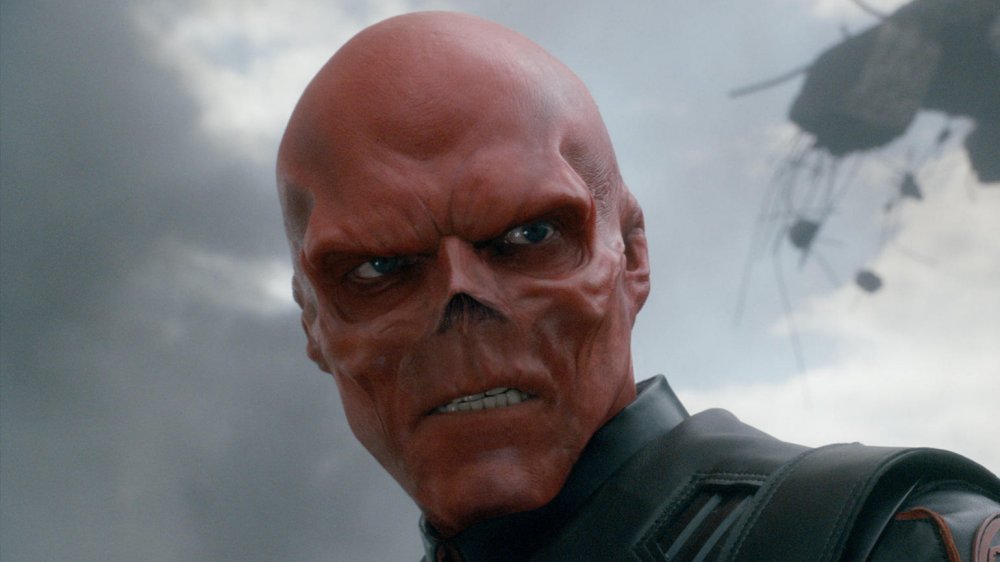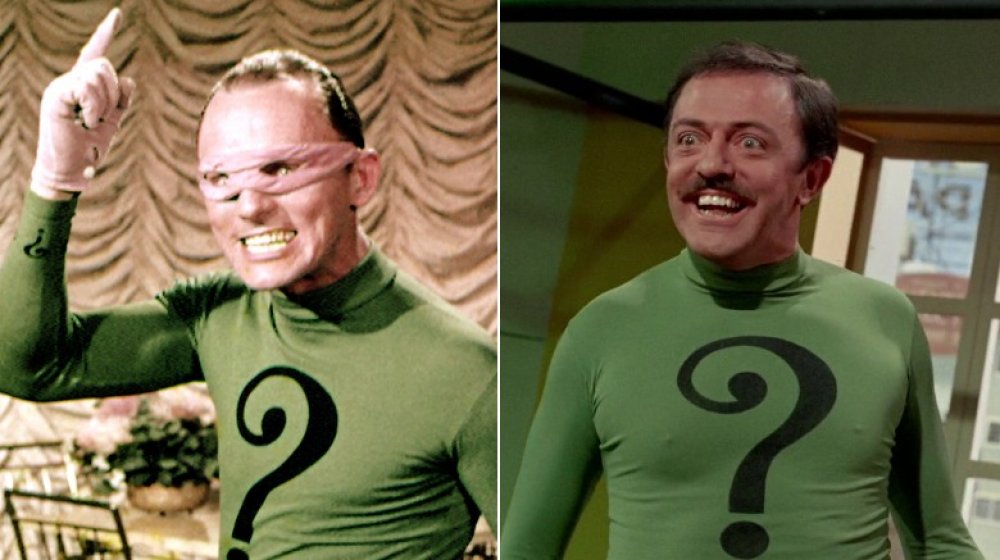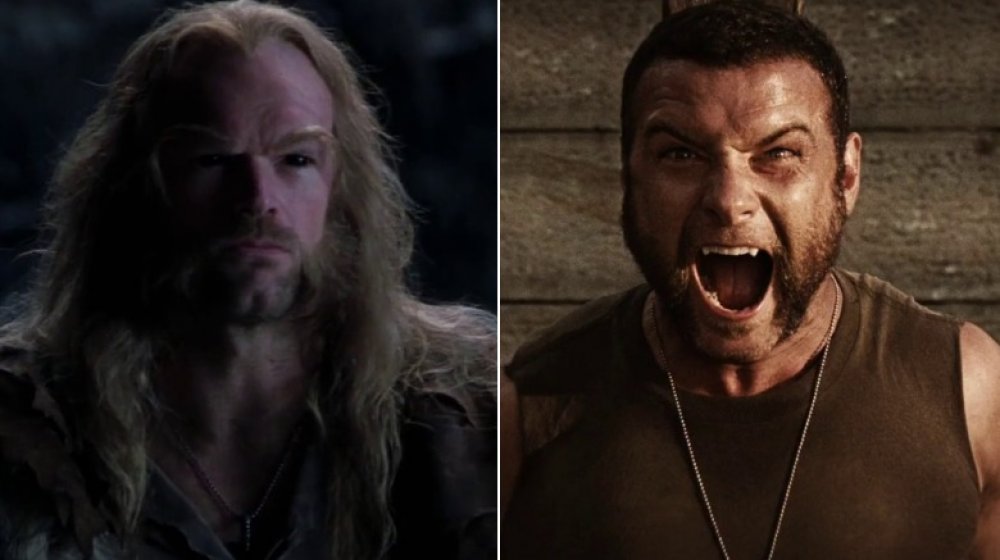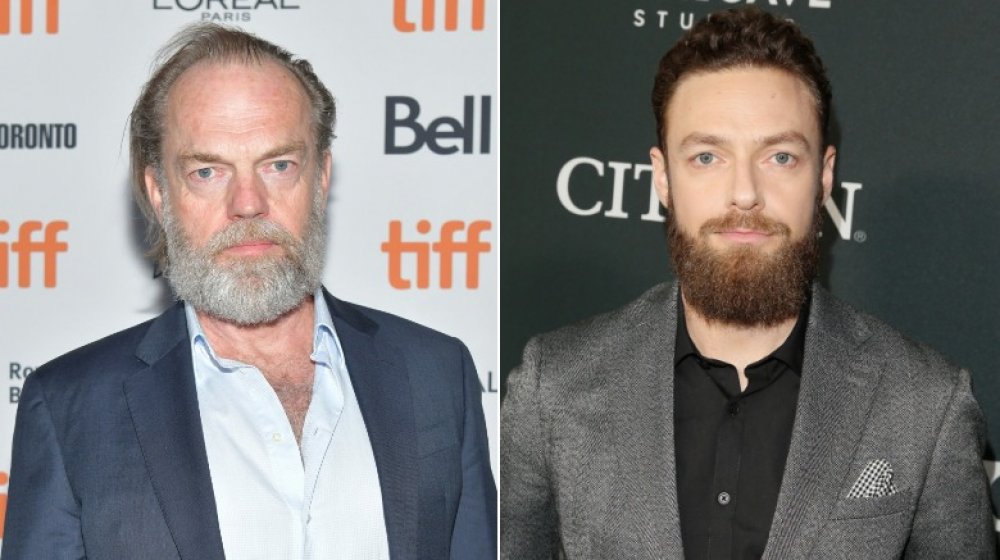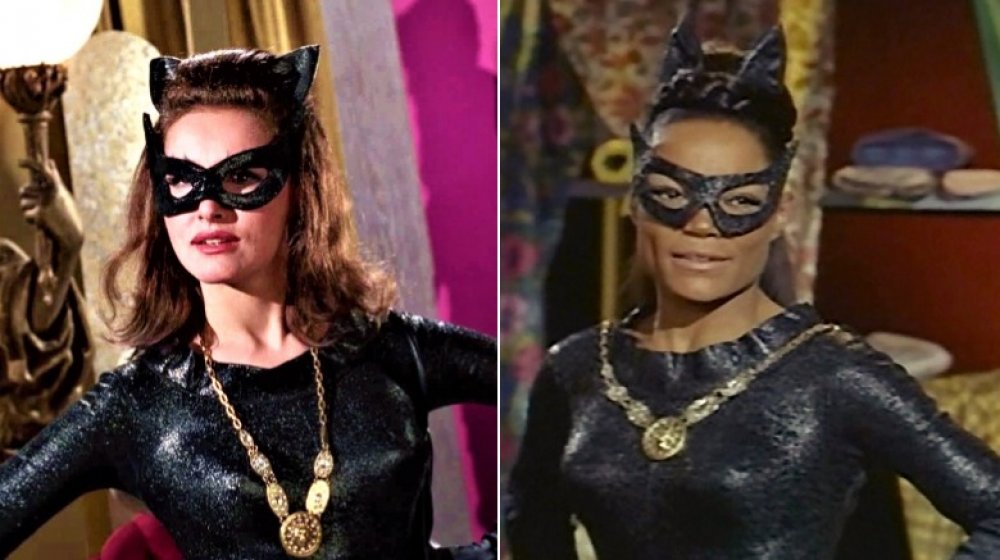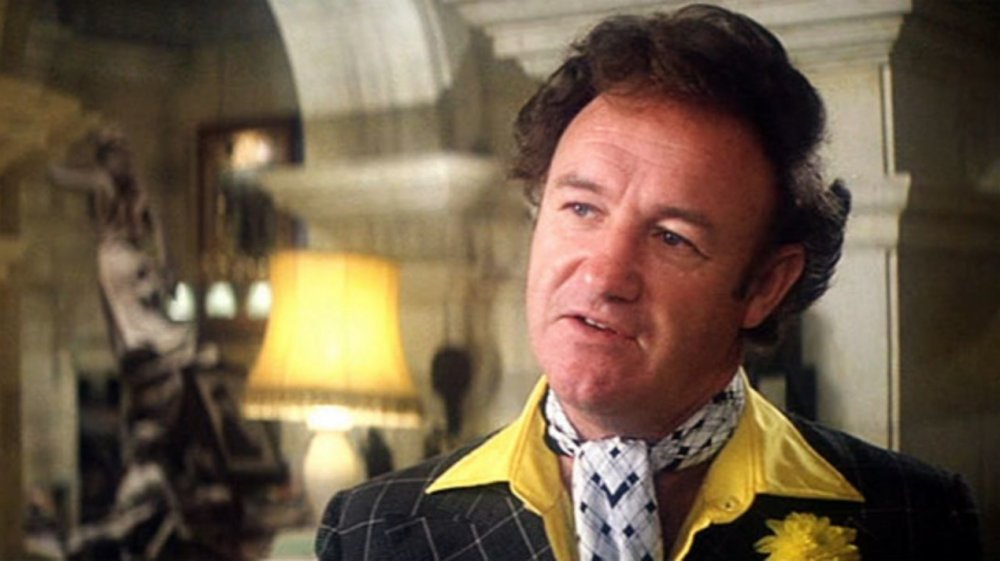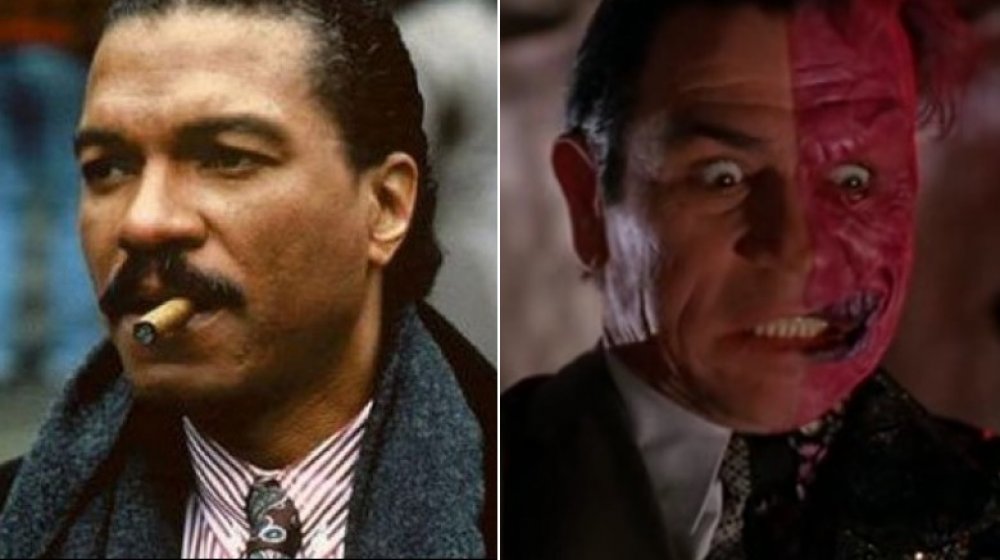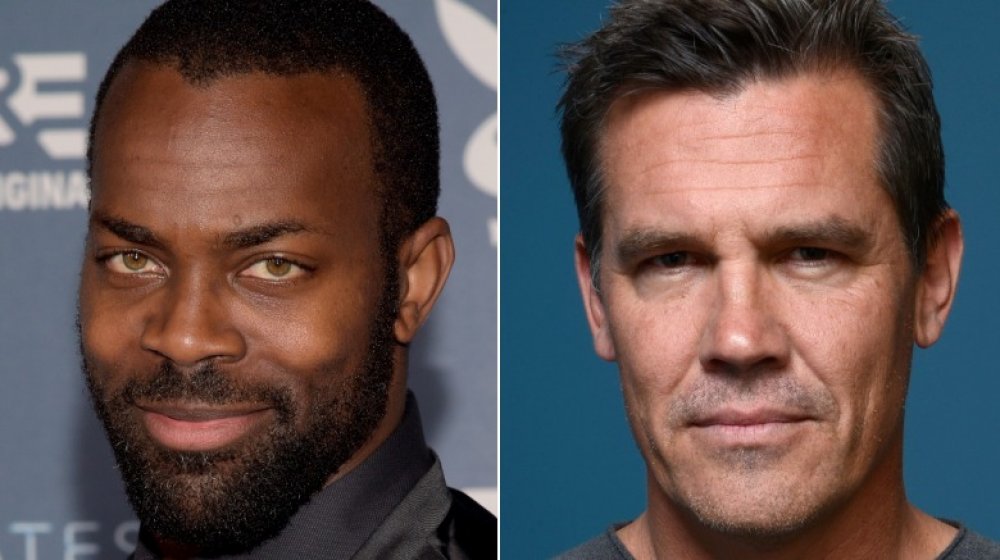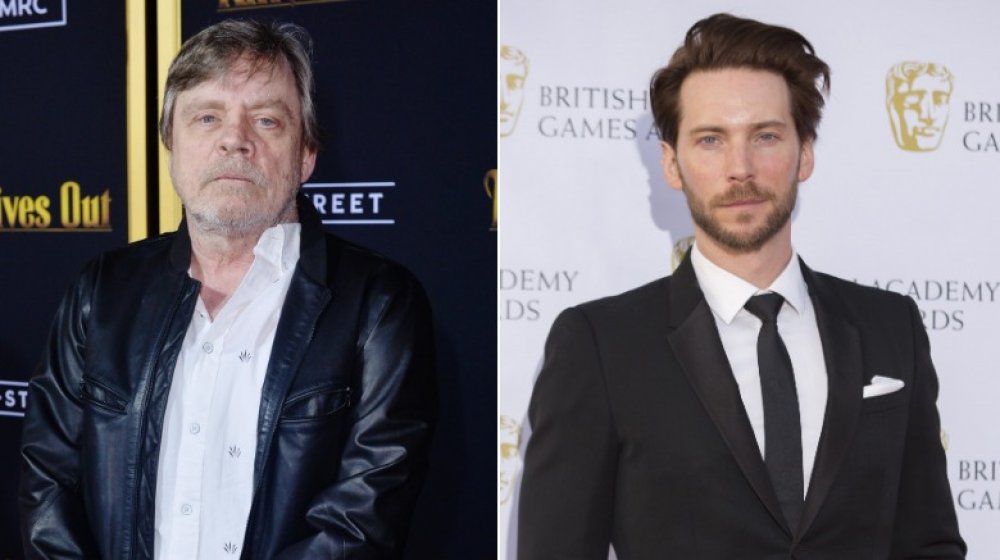The Real Reason These Supervillain Actors Were Replaced
When it comes to movie franchises or TV series, part of the appeal is that they give us a strong sense that the fictional world we just visited keeps on existing after the credits are done rolling. For example, the story that begins with Iron Man is still happening in Avengers: Endgame, as well as everything in between and everything that follows. That's a big part of why studios sign actors to multi-picture deals — because it's harder to suspend our disbelief about these movies and shows when we're constantly met with different faces playing the same character.
But sometimes, it just isn't possible to keep an actor in a role, and that's just as true for recurring bad guys as it is for the heroes, if not more so. After all, a studio is probably going to be more willing to bend over backwards to keep its superhero actors happy than the ones playing supervillains. No matter how good your Lex Luthor actor is, for example, it's Superman's name in the title. As a result, sometimes negotiations break down between studio and talent, sometimes the creative team changes and so do their needs, and other times, everyone has a different story about why casting changed. But if you want to know the truth, keep reading for the real reasons these supervillain actors were replaced.
There's a big question mark about the Riddler's replacement
Frank Gorshin played the quizzing villain the Riddler in the '60s Batman series. If camp isn't your thing, then you probably wouldn't be a fan of the show. But love it or hate it, the series had a lot to do with Batman's mainstream popularity. Plus, it turned supervillains like the Joker and the Riddler into household names. Gorshin's masked trickster remains one of the most well-loved villains of the series, and even Mark Hamill named him as one of his influences for his voice work on the Joker.
Yet in Batman's second season, Gorshin inexplicably disappeared for two episodes — "Batman's Anniversary" and "A Riddling Controversy" — and was replaced by John Astin, who's best known as Gomez Adams from The Addams Family. They were Astin's only appearances as the brain-teasing bad guy, and Gorshin eventually returned to the role.
There are apparently different stories about why the brief hiccup in casting happened. Gorshin's version was that he had a nightclub appearance commitment he couldn't get out of that conflicted with the shooting schedule. But Batman producer William Dozier had a different tale. Dozier claimed that Gorshin's talent agency demanded more money for the actor's appearances on the show than its budget could bear. Since there's no way of knowing which story is true, we may just have to wait for a caped crusader to come along and answer the riddle for us.
For Wolverine's prequel, the producers wanted brotherly love
Comics fans will tell you that two of the Marvel Universe's most vicious rivals are Wolverine and Victor Creed, aka Sabretooth. Fans got a tiny piece of that rivalry on the big screen in 2000's X-Men when retired professional wrestler Tyler Mane played Sabretooth as part of Magneto's Brotherhood. He doesn't say much, but he gets a couple of good throw-downs with Hugh Jackman's Logan. But when it was time to give Logan his first solo flick with 2009's X-Men Origins: Wolverine, Creed's role was more central to the plot, but Mane was nowhere to be seen. Instead, it was Liev Schreiber playing the savage mutant.
Speaking to The Hollywood Reporter in 2017, Mane said he didn't get to play Sabretooth in the prequel because the filmmakers wanted someone who looked more like Jackman. "The storyline was them rising as brothers," Mane explained, "and Liev and Hugh look a lot closer in that respect, so I understand. I can't say I wasn't disappointed. I'd love to get my claws back into that role. But that's Hollywood." Considering many fans see X-Men Origins: Wolverine to be the worst of the X-movies, Mane might actually want to send Schreiber and the film's producers a thank you note.
Red Skull wanted what he was owed
Hugo Weaving played the villainous Red Skull in 2011's Captain America: The First Avenger, and it took seven years for the character to return to the MCU. And when he did, it wound up being one of the more well-hidden surprises of 2018's Avengers: Infinity War. Shortly after Thanos and Gamora arrive on Vormir, the Red Skull — now sporting a very Ghost of Christmas Future look — appears to the pair, explaining he's been made the Soul Stone's guide as punishment for trying to muck with the Tesseract. But while the accent and the voice may have sounded right, it wasn't Hugo Weaving. Instead, Ross Marquand played the servile Skull in Infinity War and its 2019 follow-up, Avengers: Endgame.
Fans could've predicted such a development in 2012, when Weaving told Collider that he had no intention of reprising the Marvel role. While acknowledging that he'd signed a multi-picture contract with Marvel, he said he'd "done [his] dash with that sort of film" and that he didn't think Marvel would try to force the matter if he said no. But in fact, Weaving was apparently willing to return. He told Time Out in 2020 that Marvel had tried to low-ball him out of what was promised in his original contract. Weaving said they tried to renegotiate into paying him "much less ... and this was for two films." Weaving bowed out as a result, opening the door for Marquand.
Catwoman was replaced multiple times
The first actress to play Batman's steamy antagonist Catwoman in his '60s TV series was Julie Newmar, and she actually returned to the role (kind of) as recently as 2017. Newmar voiced Catwoman in two animated features — 2016's Batman: Return of the Caped Crusaders and the following year's Batman vs. Two-Face. Unfortunately when it came time to film 1966's Batman movie (starring everyone from the TV show), Newmar was shooting the soon-to-be-abandoned comedy Monsieur Lecoq and was replaced by Lee Meriwether. While Newmar didn't get to play Catwoman in the movie, she was still the one getting Batman hot and bothered while robbing Gotham blind for the first two seasons of the TV series.
For Batman's third and final season, Newmar left the series to make the Western Mackenna's Gold. Actress and singer Eartha Kitt took up the role of Gotham's sexiest cat burglar. Because Kitt was African-American, it was apparently deemed too controversial for her and the Caucasian Batman to keep teasing each other, so their romantic connections disappeared. While it happened for a very regrettable reason, jettisoning the flirtation between Batman and Catwoman rendered her an even more impressive threat to the Caped Crusader.
This DC villain wouldn't stand for anything less than the best
If you've seen 1980's Superman II, then this one might confuse you at first because Gene Hackman — who played Lex Luthor in 1978's Superman — did, in fact, appear as the cunning supervillain in the sequel, as well as in the colossal 1987 flop Superman IV: The Quest for Peace. However, while no other actors took over as Lex in Superman II, Hackman's lack of cooperation with the production necessitated another kind of 11th-hour replacement.
There are a whole host of books, interviews, and even a 2006 documentary – You Will Believe: The Cinematic Saga of Superman – about the behind-the-scenes drama during the making of the first two Superman films. As it turns out, there was an ongoing, bitter conflict between the producers and director Richard Donner, culminating in Donner being fired from Superman II and replaced with Richard Lester.
According to Glen Weldon's 2013 book Superman: The Unauthorized Biography, Donner commanded a great deal of respect and loyalty among the cast and crew. Some of the creative team refused to continue with Superman II after Donner's firing, and Gene Hackman reportedly joined them in leaving the movie. While Hackman had finished all of his principal photography before Donner's firing, reshoots were called for, and Hackman refused to return for them out of loyalty to the original director. As a result, Hackman was replaced by body and voice doubles for the reshoots.
Billy Dee Williams never got to see the other half of Two-Face
While Billy Dee Williams got to play the heroic scoundrel Lando Calrissian in the Star Wars saga, his hopes of playing a live-action version of the split-faced Batman villain Two-Face were dashed when he was replaced by Tommy Lee Jones in 1995's Batman Forever.
While he never got any acid thrown on his mug, fans were guessing that was in the cards for Williams when he played Harvey Dent in 1989's Batman. Dent has just been named Gotham City's new district attorney, and in most scenes, he's either making a speech to the press or helping the mayor figure out his doomed festival. But that dreaded acid never came.
At the 2017 Wizard World Nashville Comic Con, Williams told fans that his chance to play Two-Face ended with Joel Schumacher taking the reins with Batman Forever. Williams told an inquisitive fan, "I had hoped that I would have done Two-Face. But it changed hands before then, and I think Schumacher got involved, so they took a different direction with that." He also debunked a widely spread urban legend that he was paid for two movies, even though he only appeared in Batman. "You only get paid if you do the movie. ... I only had a one picture deal for Batman."
Williams did eventually get to play Two-Face in a different format. He voices the villain for 2017's The Lego Batman Movie.
No one else could play the MCU's ultimate villain
The mid-credits scene of 2012's The Avengers introduced movie audiences to Thanos but with just a quick glimpse of his hand and then a profile shot of his sadistic grin. It wasn't until Avengers: Infinity War that the villain finally became the focus of the story as he made the final push to capture all six Infinity Stones.
But the Thanos we met in The Avengers' mid-credits scene isn't the same guy who plays the Mad Titan in the rest of the Infinity Saga. Damion Poitier — best known as Duprez on HBO's True Blood — played Thanos at the end of The Avengers, and he didn't even know who he was playing until he was in the make-up chair. Poitier said that rumors that the shape-shifting Skrulls would appear in The Avengers had the actor guessing he would play the Super-Skrull, a powerful Skrull warrior with all the powers of the Fantastic Four.
Of course, Josh Brolin took up the role of Thanos in 2014's Guardians of the Galaxy, and everything we know indicates that it wasn't that Poitier was bad for the role but that Brolin was just too good. As Marvel Studios president Kevin Feige put it, "[Brolin] could be Thanos without any effects. He has that kind of face and that kind of gravitas." Not to mention that Joss Whedon has admitted he really wasn't sure exactly what to do with Thanos after The Avengers, implying there was no real long-term plan when Poitier was cast.
The Joker's old laugh was replaced for the Arkham prequel
In 2009, the video game Batman: Arkham Aslyum was released and quickly earned the reputation as one of the best superhero video games ever, if not the best. One of the game's highlights was the return of voice actors from the popular Batman: The Animated Series, most notably Kevin Conroy as Batman and Mark Hamill as the Joker. Conroy and Hamill would lend their voices to follow-ups like Arkham City, Arkham Knight, and Arkham VR. But both were missing from the 2013 prequel game Batman: Arkham Origins. Instead of Hamill, the Clown Prince of Crime was voiced by Troy Baker.
An official reason has never been offered for Hamill's absence from Arkham Origins, but we know of a couple likely contributing factors. First — while he would eventually do Joker's voice again for other games, as well as the 2016 animated adaptation Batman: The Killing Joke — in 2012, Hamill told IGN he had no intention of ever voicing the Joker again. Second, unlike the first two Arkham games which were developed by Rocksteady, Arkham Origins was developed by WB Montreal, which reportedly couldn't spare as big of a budget.
When you take Hamill already feeling finished with the character and add that to a studio that might not be able to pay him what he was used to, it seems unlikely Hamill could've ever been involved with the prequel.
